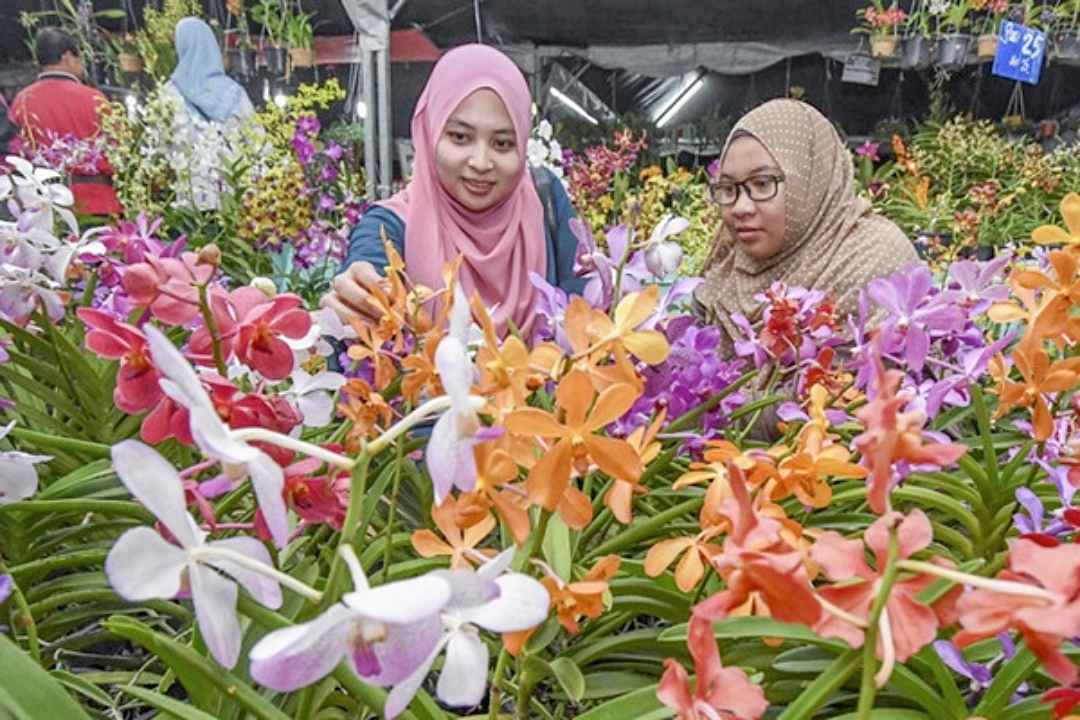
Knowledge about the flowering thresholds for different flowers can be gained through experience. — Bernama file photo
PROVIDING a favourable condition is the most important factor in flower gardening, and the ability to make that happen can be gained through experience, including trials and errors, as well as from reading.
Those already doing it would never forget the basic needs of the plants such as nutrients, as well as their ‘likes and dislikes’ – whether too little or too much heat, light, air or water.
It is important to choose the right place for your flowering plants.
As a general tip, observe the natural law – take the case of the pitcher plants and orchids originally grown in the shady rainforests; they need low light intensity and high humidity, and thrive on humus or peat, with pH level ranging between 4.5 and 6.5.
Take another situation – say, growing roses, impatiens or petunias; these blooming plants can be planted in the ground or containers, but they must be placed at a sunny spot, preferably under the morning sun and the afternoon shade.
Then, there’s the rain problem – this needs to be overcome using a rain-shelter or transparent roofing.
Now, you need to choose the right growing medium that is porous enough to facilitate good drainage and aeration for the roots, but at the same time, dense enough to act as an anchorage or feeding source, as well as to hold nutrients for the plants.
‘Airborne’ plants, such as foliar-fed orchids or those grown hydroponically, need neither any soil nor any container.
Depending on what you want to grow, prepare some hanging baskets for growing drooping plants and climbers; hanging boards for certain species of orchids; planting trays, boxes, flowering tubs, or even specifically-designed glasswares for tulips or hyacinths; or window troughs, planting poles or trellis.
It is true that almost everything can be used!
Some may ask: “Why are there no flowers, even after all of these have been done?”
Remember: hereditary genes also play a major role, and so are the genotypes (built-in factors) and the phenotypes (environmental factors) – all of these contribute to the flowering capability and readiness.
Nowadays, timing and also the use of flowering-promoting hormones and potassium oxide are frequently applied.
Knowledge about the flowering thresholds for different flowers can be gained through experience, or perhaps you should leave this to nature – or genetic engineers!
Having decided on the theme and the focal point of your garden, now choose the flower and the colour preference for the planting environment – it is better to map this out on paper and match all the compositions that you deem suitable for the garden.
Have a manageable scale to draw the layout – say 1cm on paper represents 1m on the actual ground.
First draw the border and the lawn areas. Create any level if you need it – say, some small hills, flower beds or trees/palms.
Decorate it with manageably-sized boulders, smaller stones and pebbles, fountains, ponds or other water-based features, footpaths or many other larger items for your garden.
Flowering plants can either be ground-planted or grown in containers. Choose the types slated for your border, giving it clean and clear-cut dividing lines between the lawns.
The planting areas are often bordered with coloured pebbles.
It is agreed that matching the colour and size of plants is a difficult task, unless a flower bank is available.
Nowadays, the most popular turf is still the ‘Pearl Grass’, and the style of the garden is mainly Oriental – sort of a Japanese-Chinese mix, and not so much as Western densely-planted mixes in Kuching.
Trees are mainly Pencil Pines, Blue Christmas Pines, Tea Trees, Eugenia, and Goa.
The palms are mainly Majestic, Royal, Oxtails and Red Sealing Wax.
On ‘floralscape’, a discerning garden lover would prefer to call in the experts to do it professionally.
Nonetheless, here are some suggestions: for sunny areas, go for impatiens, petunias, dahlias, vincas, gazanias, heliconias, hibiscuses, exacum (Persian violets), dianthus, canna lilies, gerbera, euphorbias, lantana, bougainvillea and coleus.
Happy Gardening!
from Borneo Post Online https://ift.tt/317CVVb
via IFTTT

No comments:
Post a Comment